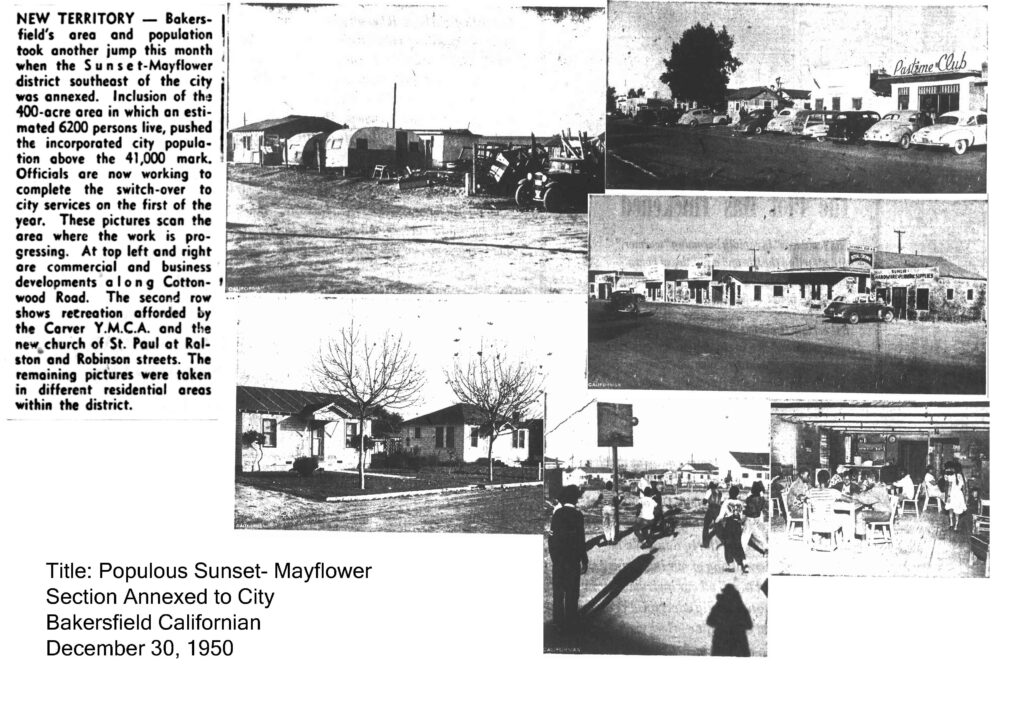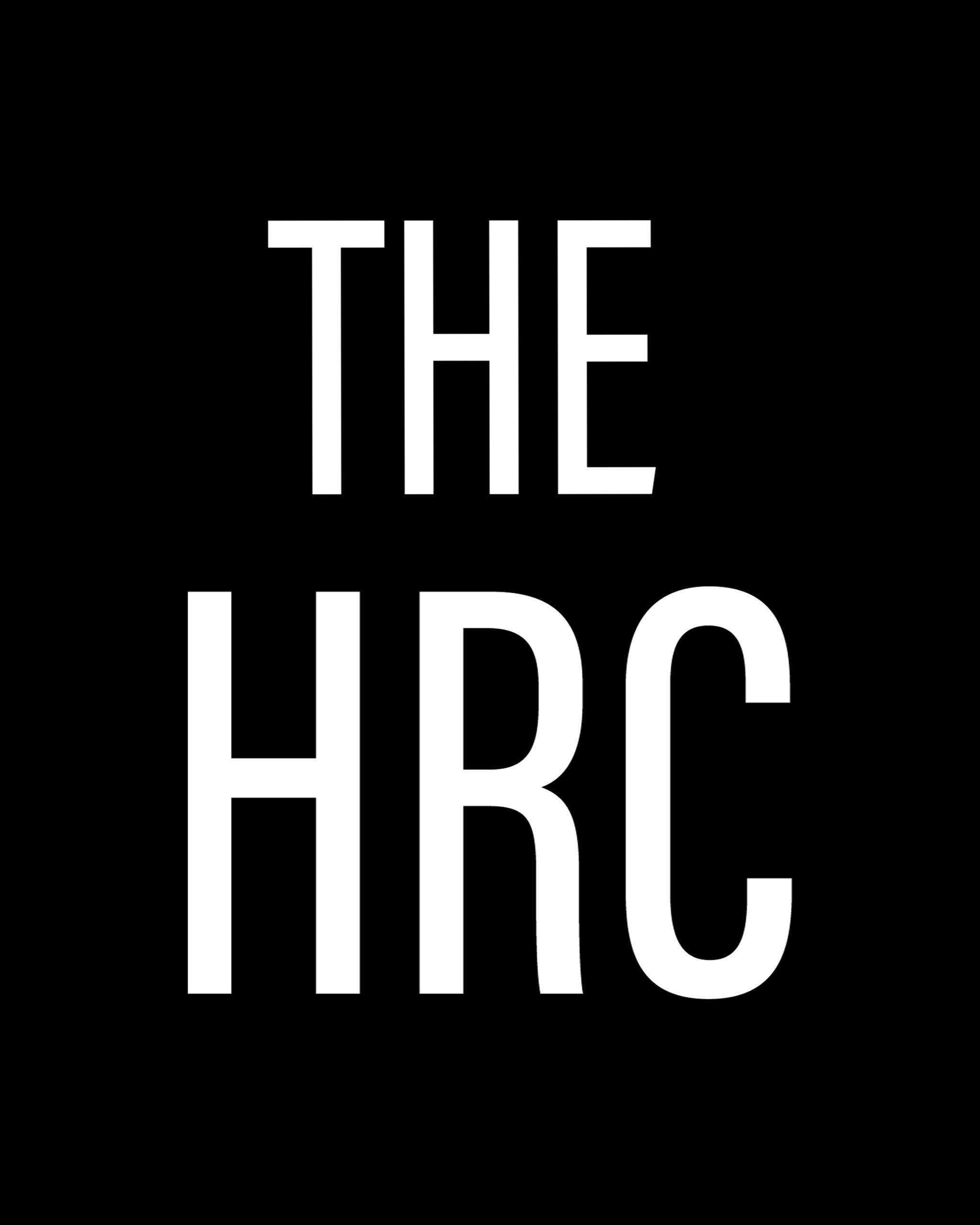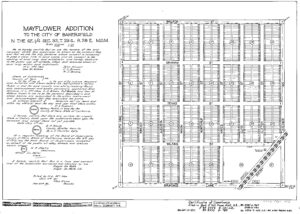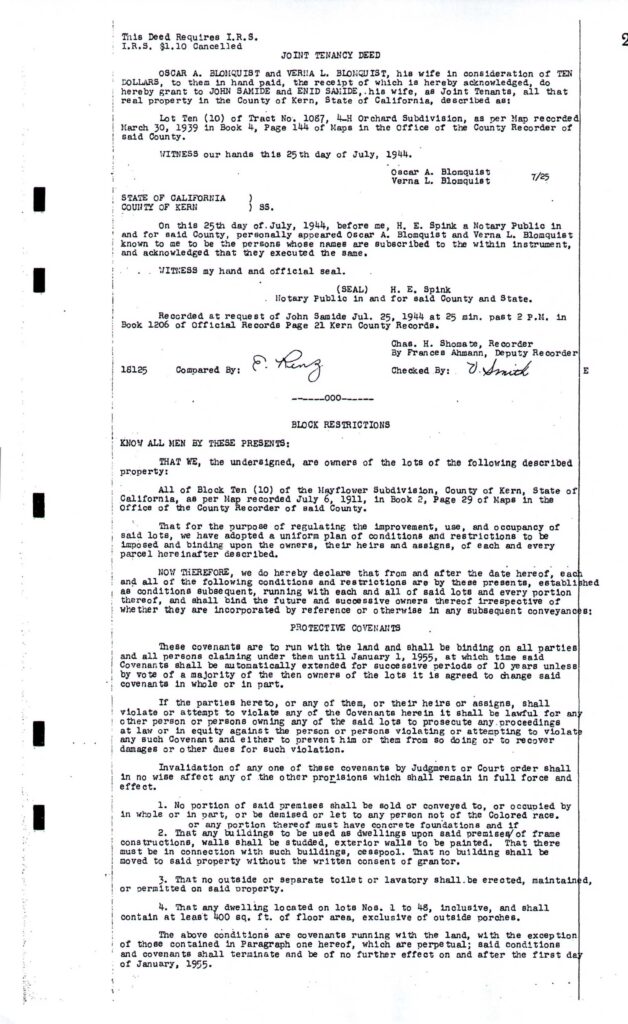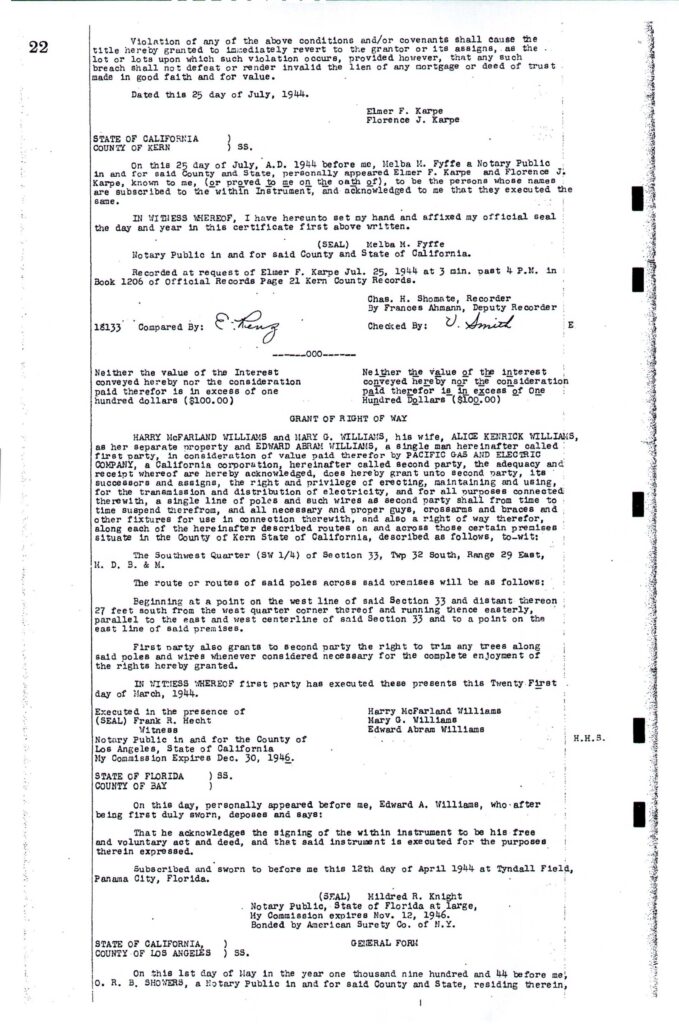Covenants – Neighborhoods – Suburban Expansion – Before 1938 – Moving into a Neighborhood
Zoning – Public Housing – Resources – Eminent Domain
Buying on Contract – East Bakersfield – Rumford Fair Housing Act
Mayflower Annex- Block 10, Bakersfield California
The Mayflower Annex was founded by Hugh L. McNew M.D., George, M. Wilkins, John Kincaid, C.D. Brown and R.J. Brown. Born in Campbell County, Tennessee, and graduating from Nashville Medical College, McNew moved to Bakersfield in 1909, dedicating his time to real estate. He formed the Bakersfield Realty and Building Company. He sold lots in the Santa Fe, Sunset Tract, and Mayflower Addition. A 1909 article from the Bakersfield Californian announced the organization of the Bakersfield Realty Building Company, stating their Chester Lane and Oak Street homes would be racially restricted: “All lots will be restricted to not less than $1000 dwellings, as well as to members of the Caucasian race, and no saloons will be permitted on the property.” Prior to 1938, home deeds featured racially exclusive language. John Kincaid raided hogs in the Mayflower Stock Farm. C.D. Brown, a contractor and builder, operated “White City,” including the Mayflower Dance Pavilion. White City was an entertainment district where “White City” was a reference to the lights that illuminated the district. R.J. Bowne was the manager of Union Lumber Company.
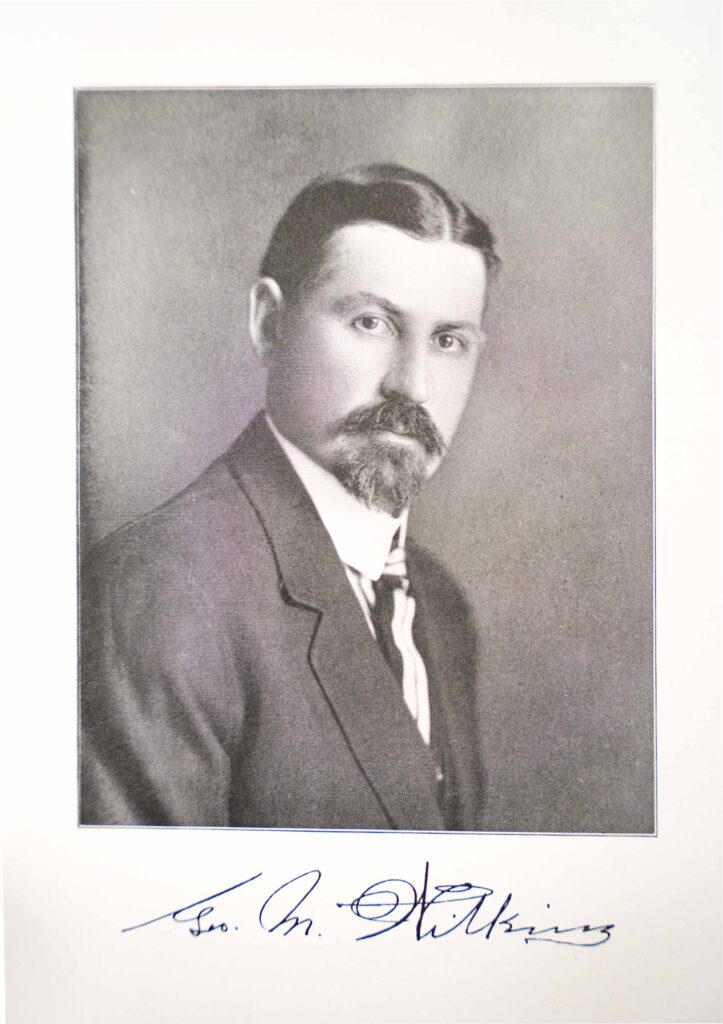
The Sunset-Mayflower District was home to much of the city’s poor migrant populations who worked in nearby agricultural fields and labor camps. Due to the black population’s wariness of cohabitating with whites within labor camps, many chose to live with family members who had settled prior or settled in areas where the white population was minimal – like the Sunset-Mayflower District.
While the district’s population was largely impoverished, the racial and ethnic background of the area was rather diverse, housing white, black, Hispanic, and Asian families. Census data from the 1920s, 30s, and 40s show a significant increase in the black population, specifically residing in the Sunset-Mayflower District and a decrease in white residents in the area. This phenomenon is known as “White Flight,” in which white families choose to leave impoverished areas when black and brown families began moving into their communities. Those who migrated out of the Mayflower into newer subdivisions opened up opportunities for housing for blacks to become available. The Sunset Tract and Mayflower Addition were a few of the only tracts in the greater Bakersfield Area that allowed unrestricted buying power to blacks.
In 1944, Elmer Karpe, a white real estate developer, filed the first all-black restrictive covenant for new homes he built on Block 10 of Mayflower. The restrictive covenant guaranteed that African Americans were the buyers of the new homes in Mayflower. Bakersfield historian and activist Johnie Mae Parker argued that this was the start of the “White Flight” and the demographic transformation of the Mayflower. “White Flight” was a national phenomenon affecting other neighborhoods. A common practice, “White Flight,” was a process in which whites left older and sometimes blighted neighborhoods for new suburban homes. Karpe is credited with building new homes for black residents. Nationally, historians have argued that in the pre-war era, segregation had occurred at the block or neighborhood level (and at the social services level), rather than in large areas or entire tracts. Whites could live near African Americans, on the same street but a block over, never having significant or substantial distance between neighbors. After World War II, with suburban development, segregation extended to entire neighborhoods, increasing inequality. Nevertheless, local myths in Bakersfield persist that these neighborhoods were always segregated. In the postwar era, neighborhoods in Bakersfield, just as in the urban and rural West, became more racially homogenous (segregated) by the 1960s. Explore Interactive Map
This neighborhood was unique, as it was segregated as a black-only neighborhood. Mayflower would have met the conditions of a “redlined” neighborhood. Section 1 reads, “No portion of said premises shall be sold or conveyed to, or occupied by in whole or in part, or be demised, or let to any person not of the colored race.”
See Johnie Mae Parker, How Long? Not Long!: The Battle to end Poverty in Bakersfield, (Bakersfield: Johnie Mae Parker, 1987)
Cruz, Donato. “‘America’s Newest City’: 1950s Bakersfield and the Making of the Modern Suburban Segregated Landscape.” ProQuest Thesis Publishing, 2020.
In December of 1950, the Sunset and Mayflower neighborhoods were annexed into the city of Bakersfield. The community secured enough votes to be added to city boundaries, guaranteeing city services like sewer, streetlights, paved roads, and trash pickup. The contract for Oro Vista was signed in early 1950, but the opening was not until 1954. The Bakersfield Realty Board supported Proposition 10 of 1950, which required a majority of electors of a county or city to approve public housing. Oro Vista was planned in the Sunset community, adjacent to Adelante Vista. A local Bakersfield realty agent sued on the basis of Proposition 10 and effectively stalled the building of Oro Vista in 1951. In January 1951, the City of Bakersfield entered into a cooperation agreement with the Housing Authority of Kern County and later rescinded the agreement in March 1952, with the support and petition of the Bakersfield Realty Board. After the Bakersfield earthquake August of 1952, the city entered a second cooperation agreement, reaffirming their cooperation in October 1952. The lawsuit and appeal carried into 1954, when it was established that Oro Vista was not subject to Proposition 10 since the contracts and loans were issued in 1949 and again in early 1950. A separate injunction in 1954 also accused the City of Bakersfield of rezoning against the interest of the majority of the population. Mayflower and Sunset were Zoned R1 (One Family) to R2 (Two Family) housing. The second lawsuit determined that the State of California, under the Health and Safety Codes and The Housing Authority Law, had the power to change zoning without the opinion of the electorate of the city or public referendum, not limited to interference by municipal or county administration.
